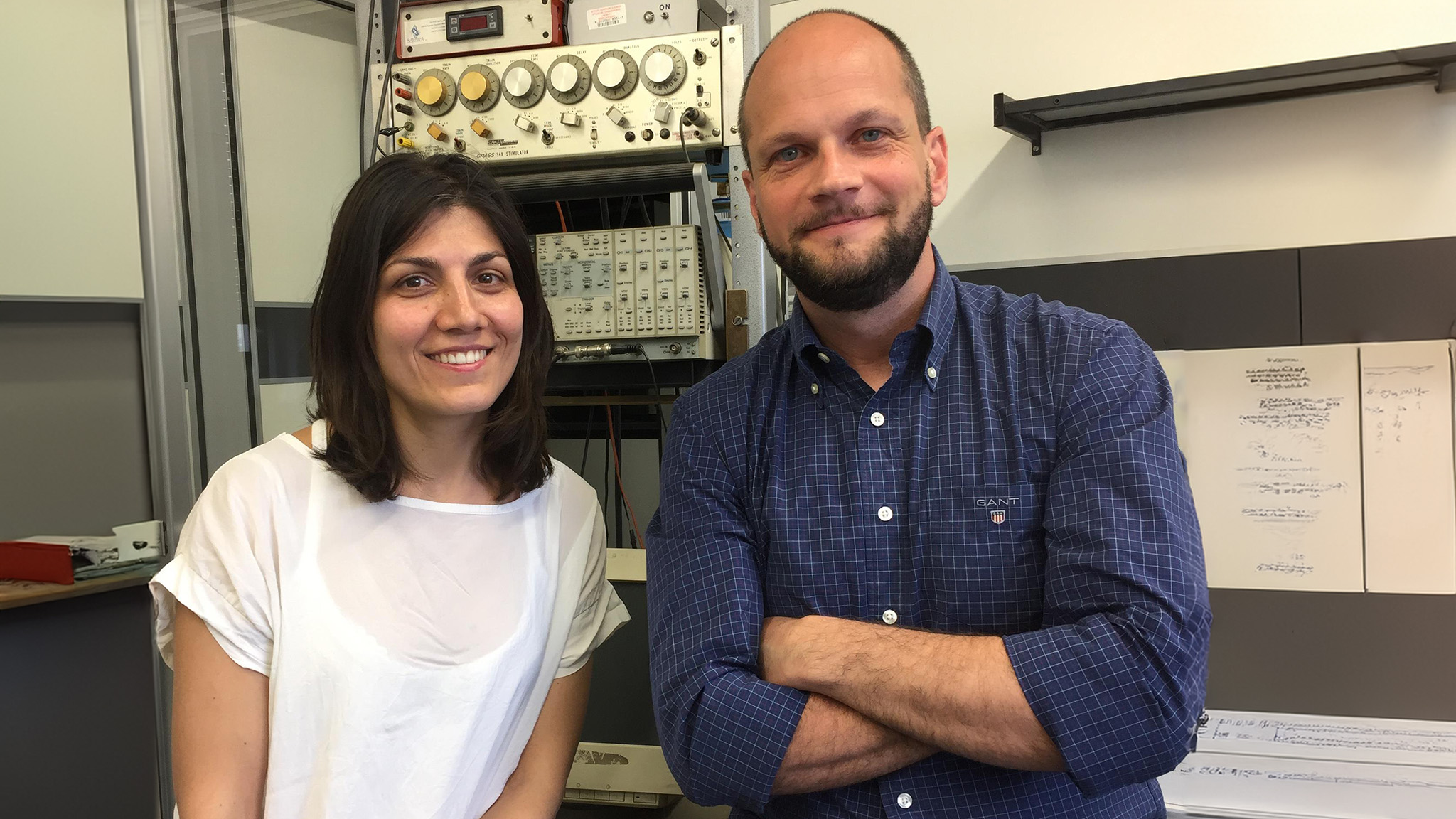Correcting Fragile X Syndrome Deficits by Targeting Neonatal PKCε Signaling in the Brain

Alberto Martire, PhD
Principal Investigator
Antonella Borreca, PhD
Co-Principal Investigator
Italian National Institute of Health
Rome, Italy
2018-2021 Grant Funding: $90,000
Summary
With a $90,000 grant from FRAXA Research Foundation, Alberto Martire, PhD, at the Italian National Institute of Health, and Antonella Borreca, PhD, at the Humanitas Clinical Institute, explored the potential of adenosine receptor antagonists to treat Fragile X syndrome. Adenosine receptors are commonly known for their antagonists caffeine, theobromine and theophylline, whose action on the receptors produces the stimulating effects of coffee, tea and chocolate.
The Science
by Alberto Martire, PhD
Targeting Adenosine Receptors to Treat Fragile X
Adenosine receptors work together with glutamate receptors to facilitate neuron-to-neuron communication in the brain. Adenosine is a component of the “energy molecule” ATP as well as the intracellular signaling molecule, cyclic AMP, and it accumulates in the brain the longer you are awake, which makes you feel tired. When you drink coffee or tea in an effort to stay awake, you block those adenosine receptors and the sensation of tiredness. When you sleep, your brain metabolizes all the excess adenosine accumulated during the day. This is one of the major restorative functions of sleep.
Among the compounds which are able to block adenosine receptors, some of them – theophylline, theobromine, and caffeine – are commonly found in tea, chocolate, and coffee. Blocking adenosine receptors not only makes you feel alert, but it also enhances cognitive function quite a bit (that’s why coffee is recommended before exams!) Caffeine is the most popular smart drug in the world.
While many people have traditionally tried to avoid giving caffeine to people with cognitive disabilities, this may actually be a useful and available strategy for cognitive enhancement. Our lab has evidence in slices and in live FX mice showing very good rescue effects using A2AR antagonists. Why might this work even though mGluR5 antagonists didn’t work? This coupling of receptors might be one way tolerance develops, so perhaps a cocktail treatment that hits multiple receptors could avoid tolerance.
The aim of our project is to study, for the first time, adenosine receptors in a mouse model of Fragile X syndrome, with a particular focus on the A2AR subtype. Our interest is based on the strong physical and functional interactions that exist in many brain areas between the A2A and mGlu5 receptors. As already demonstrated by our group, in the mouse hippocampus the A2A receptor “leads the charge” of the mGlu5 receptor; activation of the A2AR allows the mGlu5R to work correctly. This suggests that blocking A2AR might normalize the aberrant mGlu5R-mediated effects typical of the disease.
Multiple Fragile X Treatment Targets Are Connected
The adenosine receptor subtype A2AR strongly impinges on many other different signaling pathways involved in FXS, including STEP (discovered by FRAXA Investigator Dr. Paul Lombroso at Yale University), ERK1/2 (investigated by FRAXA Investigators Dr. Emily Osterweil and many others), and BDNF/TrkB (studied by Dr. Julie Lauterborn with a FRAXA grant). All these pathways are increased in Fragile X syndrome and all are strongly facilitated by the A2AR, suggesting that strategies to inhibit the A2A receptor should normalize these altered pathways and have beneficial effects in Fragile X.
To gain further insights into the relationship between Fragile X syndrome and A2AR, we will evaluate possible changes in A2ARs expression, signaling and functions in the CNS of Fragile X mice. Molecular pathways associated with A2AR signaling and the A2AR mRNA/FMRP interaction will be explored as well. Furthermore, we will assess whether pharmacological blockade of A2ARs (by chronic treatment with two antagonists, caffeine and istradefylline) may prove beneficial, in terms of biochemical parameters, synaptic functions, and neurobehavioral phenotypes, in Fragile X mice.
If we see positive results, our study would demonstrate that A2ARs play a role in Fragile X syndrome and that their antagonists are able to modulate the phenotype of the Fragile X mouse model.

